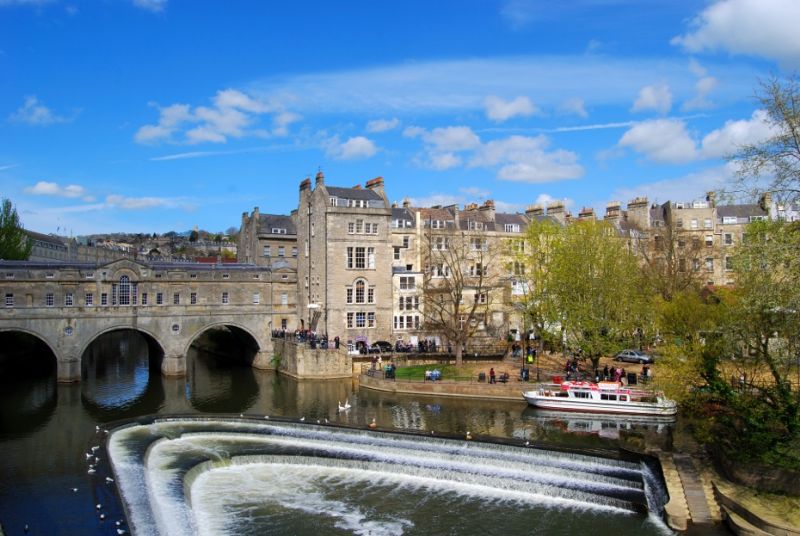
A brief guide to Bath’s beautiful architecture
15 February 2016Every year, thousands of architecture fans visit Bath to marvel at its impressive and unique buildings, some of which are hundreds of years old. From the historic Roman Baths to the awe-inspiring sweep of the commanding Royal Crescent, there is plenty of inspiring architecture to enjoy in this UNESCO World Heritage Site.
One of the most noticeable features of architecture in Bath is the consistency of style and appearance. Most of the buildings are constructed or covered with beautiful Bath stone, known for its warm honey colours. The Georgians shaped much of the city as we see it today, either building or covering building facades to tie in with the classical, grand and palatial appearance architects John Wood and son were aiming for.
Highlights to look out for
If you’re visiting Bath, here are the essential buildings and architectural gems to add to your must-see itinerary:
- The Royal Crescent. This is the best-known of Bath’s sweeping terraces, and it doesn’t disappoint in person. It is a fascinating construction, with the grand façade being designed by John Wood the younger and completed between 1767 and 1774. Behind this, however, each of the terrace’s 30 owners commissioned their own architects to build a house to their own specifications – known as ‘Queen Anne fronts and Mary-Anne backs’, a style often seen elsewhere in Bath.
- Pulteney Bridge. This much-admired bridge over the River Avon was designed by Robert Adam in a Palladian style, believed to be based on an unused design for the Rialto in Venice. This Grade 1 listed building was completed in 1774 and is one of only four bridges in the world to have shops spanning both sides.
- The Circus. This spectacular development was designed by John Wood the elder to be a circular space for theatre, civic functions and games – it’s three long, curved terraces are inspired by the Colosseum in Rome.
- Bath Abbey. The Abbey was first built in 1499 on the site of an 8th century church, but it has undergone many catastrophes, changes and re-builds over the years. Nonetheless, it is still a majestic building and well worth exploring.
- The Roman Baths. Located below street level, this popular tourist attraction offers a glimpse into how Romans would have made use of the area’s natural hot springs for public bathing. Along with the Grand Pump Room, which is also well worth visiting, the Baths and its Sacred Spring, Roman Temple and museum receive more than a million visitors a year.
- The Assembly Rooms. For those interested in Bath’s history as a fashionable city, visited by the likes of Jane Austen and Charles Dickens the Assembly Rooms will prove fascinating. The building was designed to be a hub for fashionable society, laid out in a U-shape with four main rooms, including a grand ballroom for balls, concerts and other entertainment.
If you want to experience Bath’s beautiful Georgian architecture for yourself, consider a stay in one of Bath Holiday Rental’s luxurious and conveniently located properties.




